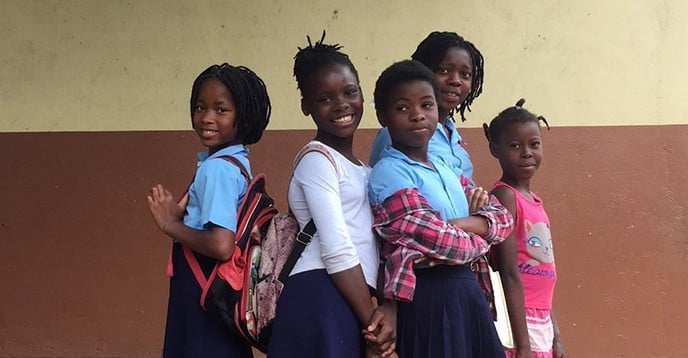Disasters have a major impact on children, youth and education systems. Studies of disaster trends and the likely consequences of climate change suggest that each year 175 million children are likely to be affected by natural hazard related disasters alone. Mozambique is taking steps to improve the safety of its educational infrastructure, using a methodology developed by UNESCO and the University of Udine’s SPRINT-Lab, which facilitates risk assessments in school facilities and provides fact-based practical information to help decision-makers identify areas of concern and prioritize investments.
The pilot project involved a stakeholders’ workshop to introduce the method and establish key partnerships for its adaptation to the Mozambican context, and several workshops to build local capacities to use the methodology and train relevant staff. Mozambique’s Ministry of Education and Human Development aims to apply the UNESCO-VISUS methodology for multi-hazard school safety assessment to about 100 schools in this initial phase of implementation.
students assessing risks using the VISUS paper codification forms as well as a dedicated mobile phone app, VISUS FinderThe stakeholders’ workshop, held in September 2017, was facilitated by Jair Torres, UNESCO, and Professor Edgar Peña, University of El Salvador, both VISUS experts who participated in the very first pilot implementation of this project in El Salvador in 2013. Implementation then began in November, with a series of trainings. The first covered the application and use of the UNESCO-VISUS methodology by decision makers. The second focused on the theoretical aspects of the methodology, to train teachers of the University of Eduardo Mondlane (UEM) as well as technical staff of the Ministry of Education and Human Development and of the National Institute for Disaster Management of Mozambique (INGC).
The third and last workshop focused on the practical use of the methodology for assessments on the ground. Participants included teachers of the Faculty of Architecture of the UEM, as well as last-year students, who are now able to conduct risk assessments in schools using the methodology. The training concluded with a practical exercise: to survey six schools in Maputo City. The six schools surveyed were EPC (Complete Primary School) 3 de Fevereiro, EPC “A luta continua”, EPC São António de Polana, EPC do Alto Mãe, EPC de Mikadjuine, and EPC Unidade 7.
Once the validation is complete, this data will be available as individuals school reports for each school, and as a collective report addressed to the decision-makers of the Ministry of Education and Human Development of Mozambique. The individual reports will then be shared in a mapping tool as geolocalized data (GIS format). The conclusions of the surveys conducted during the pilot phase will be presented to the Government of Mozambique in the beginning of 2018. They will provide ready-to-use science-based information on school safety, to enable Mozambican decision-makers to make informed decisions about school safety and upgrading, allowing them to improve budgeting and to prioritize interventions and expenditures.
The implementation of the UNESCO-VISUS methodology for multi-hazard school safety assessment in Mozambique was supported by UNESCO, the Global Facility for Disaster Reduction and Recovery (GFDRR) and the Belgian Development Cooperation Agency.


